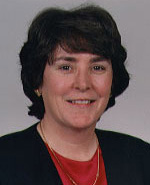by Peggy Coyne
 Teachers have known for years that students learn differently. The latest research in the neurosciences is confirming this through the ability of neuroscientists to capture images of brain activity as we engage in learning new tasks. The evidence from these pictures is clear that no two brains learn the same way. The way each of us learns is as different as our fingerprints. So it makes sense that a one-size-fits-all curriculum made for “average” learners will not yield the results we want. There are no average learners. Learner variability is the norm. How can we as teachers, who have anywhere from 18-38 students in our classrooms address this challenge? How can we design lessons that address learner variability, that maximize learning for all students, from those who struggle to those who excel? These are some of the questions that teachers from the Bronx, NY addressed during a two-week workshop where they learned how to apply Universal Design for Learning framework to their literacy practices. Universal Design for Learning (UDL), an educational framework based on the neurosciences, holds as a core belief that learner variability is the given. UDL at a Glance is a short video that provides an overview and explains the connections between neuroscience and how the UDL Guidelines are helping teachers address learner variability.
Teachers have known for years that students learn differently. The latest research in the neurosciences is confirming this through the ability of neuroscientists to capture images of brain activity as we engage in learning new tasks. The evidence from these pictures is clear that no two brains learn the same way. The way each of us learns is as different as our fingerprints. So it makes sense that a one-size-fits-all curriculum made for “average” learners will not yield the results we want. There are no average learners. Learner variability is the norm. How can we as teachers, who have anywhere from 18-38 students in our classrooms address this challenge? How can we design lessons that address learner variability, that maximize learning for all students, from those who struggle to those who excel? These are some of the questions that teachers from the Bronx, NY addressed during a two-week workshop where they learned how to apply Universal Design for Learning framework to their literacy practices. Universal Design for Learning (UDL), an educational framework based on the neurosciences, holds as a core belief that learner variability is the given. UDL at a Glance is a short video that provides an overview and explains the connections between neuroscience and how the UDL Guidelines are helping teachers address learner variability.
Monee Perkins, a teacher at Bronx Math Prep, attended the UDL workshop. Here are some of her reflections and new ideas she will integrate into her classrooms this year as a result of that work:
 “I often hear my administrators say, ‘You have to teach to the whole child,’ and I would say to myself, ‘Oh no, I cannot create 90 individual lessons for my students, I have a life.’ However, UDL helped me realize that is not what my administrators meant. UDL and my administration team are suggesting that I create one lesson, and in the design of that lesson make sure I minimize the barriers so every student can walk away with the big ideas through a variety of lessons and projects. Using the UDL Guidelines, I can allow learning to be fun through Multiple Means of Engagement; support and scaffold the ways students learn through Multiple Means of Action and Expression; and provide Multiple Means of Representation by presenting content in different ways. What I find amusing is the fact that teachers already do many of the things included in the UDL Guidelines, especially in special education. But now I realize that by designing lessons using the UDL Guidelines we can maximize learning for all students, including the ‘average student’ from the beginning. As a result of my work with UDL, I intend on incorporating more media in my lessons, giving students choice, and implementing more resources such as ADOBE Reader, Wall Wisher, BookBuilder, and Voice Thread to help me address the variability of learners in my classroom. I look forward to updating you in a few months to let you know how things went.”
“I often hear my administrators say, ‘You have to teach to the whole child,’ and I would say to myself, ‘Oh no, I cannot create 90 individual lessons for my students, I have a life.’ However, UDL helped me realize that is not what my administrators meant. UDL and my administration team are suggesting that I create one lesson, and in the design of that lesson make sure I minimize the barriers so every student can walk away with the big ideas through a variety of lessons and projects. Using the UDL Guidelines, I can allow learning to be fun through Multiple Means of Engagement; support and scaffold the ways students learn through Multiple Means of Action and Expression; and provide Multiple Means of Representation by presenting content in different ways. What I find amusing is the fact that teachers already do many of the things included in the UDL Guidelines, especially in special education. But now I realize that by designing lessons using the UDL Guidelines we can maximize learning for all students, including the ‘average student’ from the beginning. As a result of my work with UDL, I intend on incorporating more media in my lessons, giving students choice, and implementing more resources such as ADOBE Reader, Wall Wisher, BookBuilder, and Voice Thread to help me address the variability of learners in my classroom. I look forward to updating you in a few months to let you know how things went.”
This article is part of a series from the International Reading Association Technology in Literacy Education Special Interest Group (TILE-SIG).
<a href="http://engage./TeachertoTeacher/Directory/CommunityDetails11/CommunityDet
ails111/">

